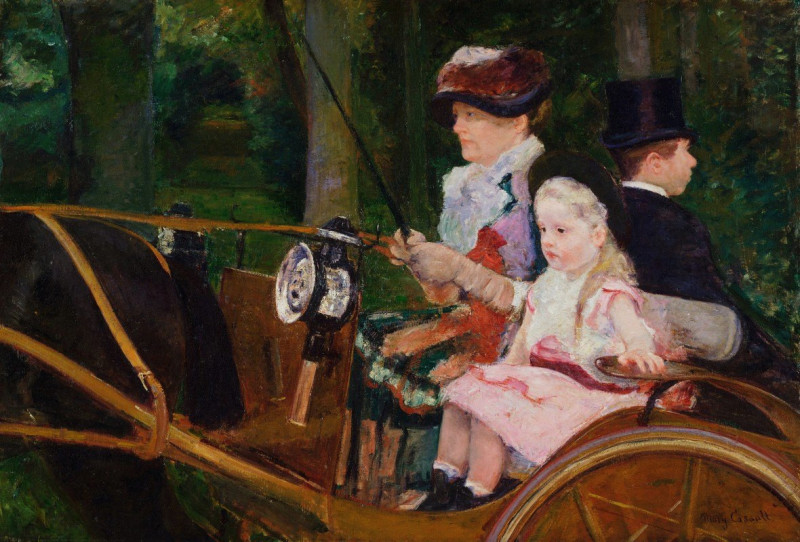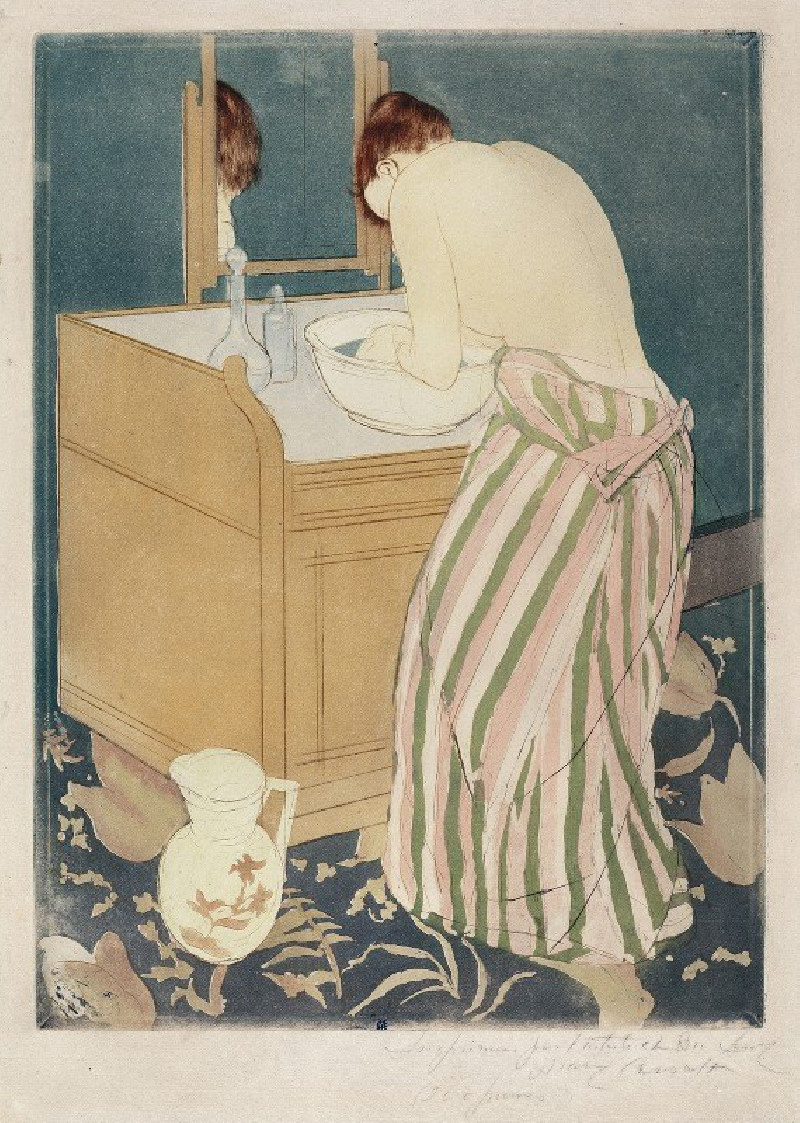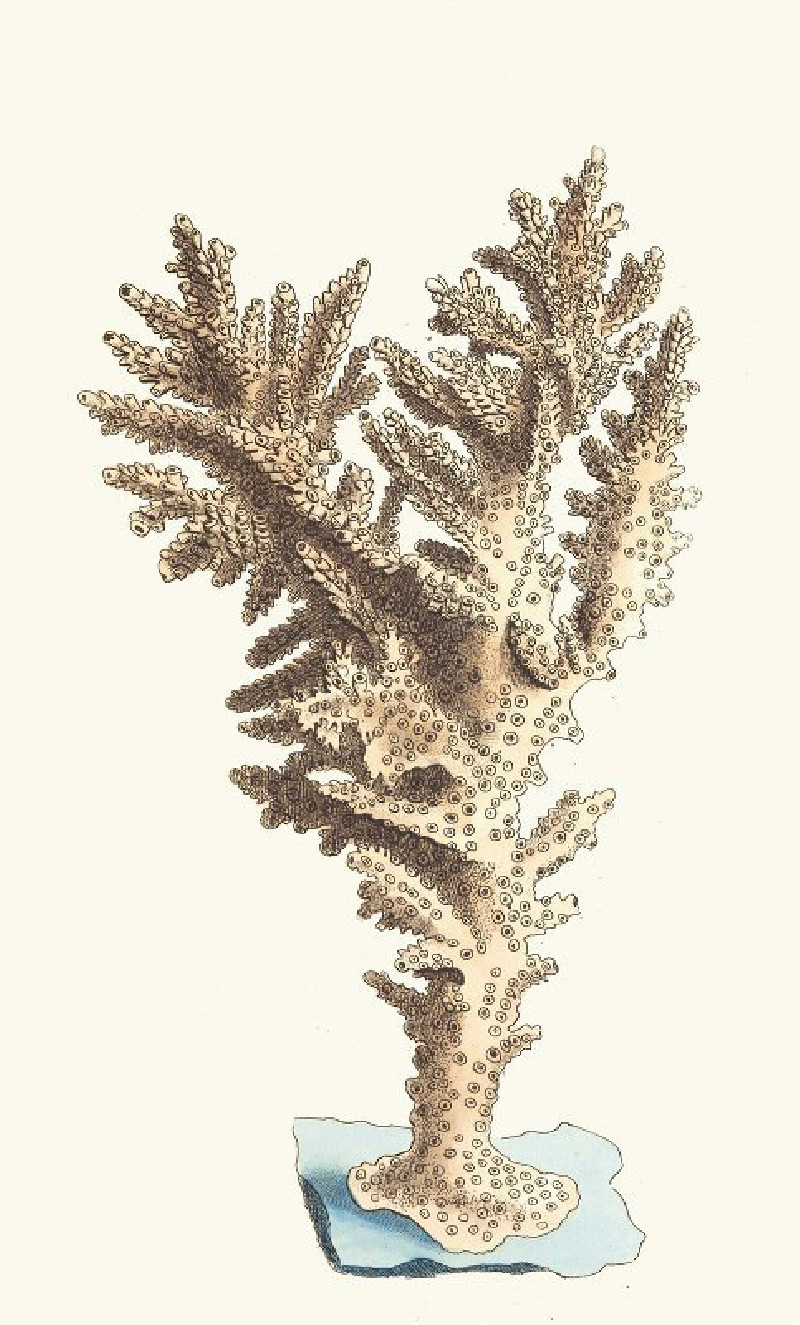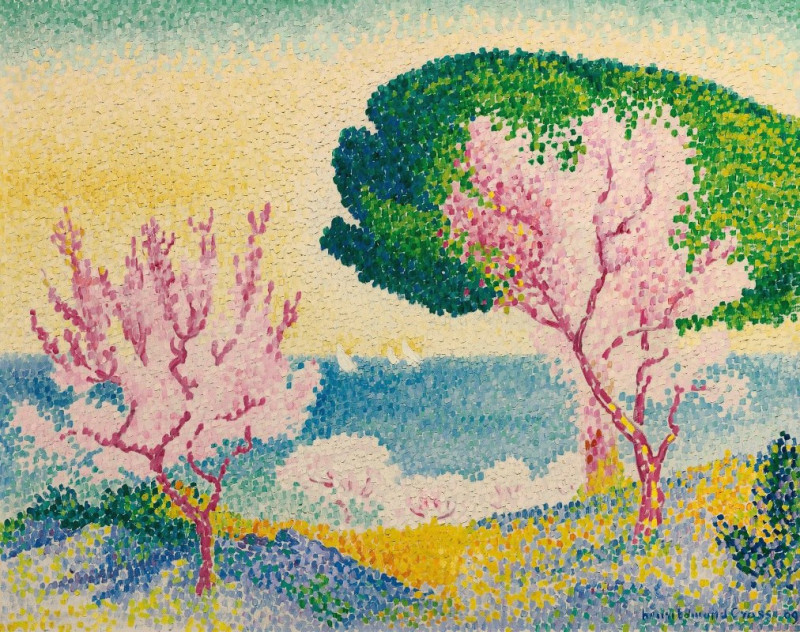Child in a Straw Hat (c. 1886)
Technique: Giclée quality print
Recommended by our customers
More about this artwork
Mary Cassatt, an American painter and printmaker, was an influential figure in the Impressionist movement. One of her charming works, "Child in a Straw Hat," painted around 1886, provides a captivating glimpse into her unique approach to portraiture and her deep appreciation for the subtleties of human expressions and emotions.This painting captures a young girl dressed in a light blue dress, with gentle puffed sleeves and a simple white collar. The standout feature of this artwork is undoubtedly the large straw hat, adorned with a black and white ribbon, which sits atop the child's loosely pinned, tousled blonde hair. The hat not only acts as a striking visual anchor but also frames her youthful and slightly flushed face.Cassatt’s skill in capturing the innocence and serene contemplation of childhood is evident here. The girl’s expression, a mixture of pensiveness and a hint of melancholy, draws viewers into a moment of quiet introspection. Her eyes, subtly detailed, along with slightly parted lips, suggest a moment caught between casual observation and deeper thought.Typical of Cassatt’s work, the background is muted, a soft neutral tone that allows the viewer to focus entirely on the subject. The brushwork is loose, with visible strokes that lend a sense of immediacy and intimacy to the portrait."Child in a Straw Hat" is more than just a depiction of a child; it is a thoughtful study of youth, expression, and the simplicity of a moment captured in time. This painting stands as a testament to Cassatt’s mastery of portraiture and her ability to convey profound emotional depth through her subjects.
Delivery
Returns
Mary Stevenson Cassatt was an American painter and printmaker. She was born in Allegheny City, Pennsylvania (now part of Pittsburgh’s North Side), but lived much of her adult life in France where she befriended Edgar Degas and exhibited with the Impressionists. Cassatt often created images of the social and private lives of women, with particular emphasis on the intimate bonds between mothers and children.
She was described by Gustave Geffroy as one of "les trois grandes dames" (the three great ladies) of Impressionism alongside Marie Bracquemond and Berthe Morisot.In 1879, Diego Martelli compared her to Degas, as they both sought to depict movement, light, and design in the most modern sense.














































